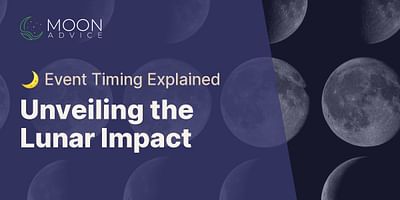Diana Schneider is a renowned spiritual mentor and expert in lunar influences. With years dedicated to unraveling the mysteries of the moon's impact on spiritual pathways and individual development, she offers comprehensive moon phase consultations and advice to those aspiring to harmonize their lives with the moon's cycles.
Dear reader,
Thank you for reaching out with your question about the phases of the moon and how they relate to the length of the lunar cycle and the position of the moon in its orbit. Understanding this relationship can provide valuable insights into the influence of the moon on various aspects of our lives.
The lunar cycle refers to the time it takes for the moon to complete one orbit around the Earth, which is approximately 29.5 days. During this cycle, the moon goes through eight distinct phases, each with its own unique energy and symbolism. These phases are New Moon, Waxing Crescent, First Quarter, Waxing Gibbous, Full Moon, Waning Gibbous, Third Quarter, and Waning Crescent.
The length of the lunar cycle is determined by the moon's orbit around the Earth. The moon's orbit is not a perfect circle but rather an ellipse, with the Earth slightly off-center. This means that the moon's distance from the Earth varies throughout its orbit. When the moon is closest to the Earth (perigee), it is in its New Moon phase. Conversely, when the moon is farthest from the Earth (apogee), it is in its Full Moon phase.
The position of the moon in its orbit also affects the angle at which sunlight hits the moon's surface, leading to the different phases we observe from Earth. During the New Moon phase, the moon is positioned between the Earth and the Sun, with the side of the moon facing us in darkness. As the moon moves along its orbit, we gradually see more of the illuminated side, leading to the Waxing Crescent, First Quarter, and Waxing Gibbous phases.
When the moon reaches the opposite side of its orbit, we observe the Full Moon phase. At this point, the moon is fully illuminated as the sunlight directly hits its surface. As the moon continues its orbit, we start to see less of the illuminated side, leading to the Waning Gibbous, Third Quarter, and Waning Crescent phases, until it returns to the New Moon phase and the cycle begins again.
The phases of the moon have long been associated with various aspects of our lives, including emotions, relationships, and decision-making. Each phase carries its own unique energy and symbolism, which can influence our experiences and perceptions. For example, the New Moon phase is often associated with new beginnings and setting intentions, while the Full Moon phase is associated with heightened emotions and manifestation.
Understanding the relationship between the phases of the moon, the length of the lunar cycle, and the position of the moon in its orbit can help us align with the natural rhythms of the universe. By paying attention to the moon's phases and their corresponding energies, we can harness the power of lunar wisdom to navigate our emotions, enhance our relationships, and make decisions in alignment with our true selves.
I hope this explanation has shed some light on the connection between the phases of the moon, the length of the lunar cycle, and the position of the moon in its orbit. If you have any further questions or would like to explore this topic in more depth, please feel free to reach out. Remember, the moon is always there to guide and support you on your journey.
Moon blessings,
Celeste Moonbeam















